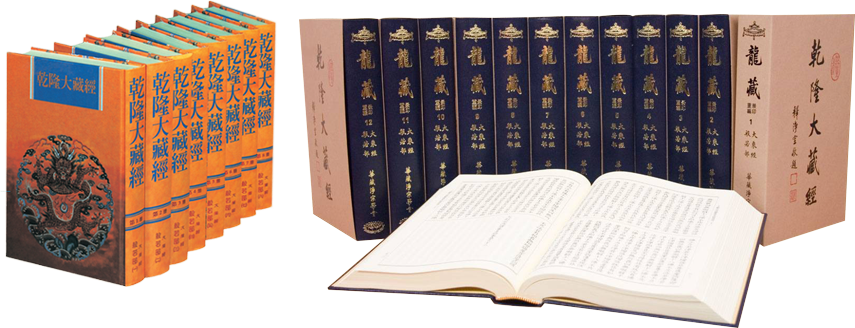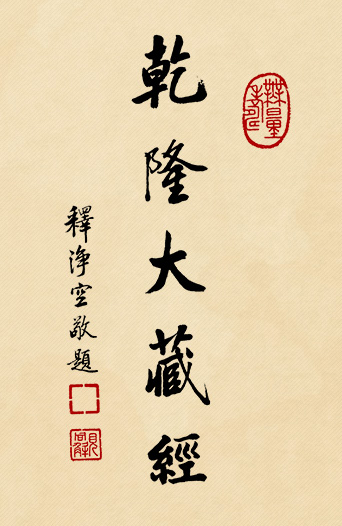
The Qianlong Buddhist Canon, also known as the Buddhist Canon of the Qing Dynasty, is the official book set, which were engraved, the Chinese Buddhist Canon of the Qing dynasty. It was also known as the Dragon Canon as the page margins included a dragon design. The engraving commenced in the eleventh year of the reign of Emperor Yongzheng and was completed during the third year of the reign of Emperor Qianlong. It is a most significant court engraving of the Buddhist Canon in China’s history.
The contents of the Qianlong Buddhist Canon are extensive. The contents consist of 1,669 volumes and 7,168 scrolls of sutras, which are teachings of the Buddha; precepts; commentaries; and other works using 79,036 woodblocks.
There were strict and rigorous selection criteria for inclusion in the Buddhist Canon. The sutra or annotation had to first be approved by contemporary venerable masters, and then by the emperor. This was to ensure the proper understanding by the people and the confidence of future generations.
These texts of infinite wisdom can truly assist us to resolve all issues that confront our world today, from individual and national to global levels. Thus the Buddhist Canon is not only the greatest treasure of Buddhism, but a cultural treasure of humanity. Studying the Buddhist Canon enables us to uplift the spirit of society and improve governance and social stability.
Professor Fang Dongmei, a great philosopher of his time, once stated, “The Chinese were most proud of their achievement, and considered that their translation of the Buddhist texts not only completely preserved the meaning but surpassed the Sanskrit in exquisiteness and mastery of expression. Thus, they replaced the Sanskrit texts.”
It is important to note that the Chinese Buddhist sutras were translated from Sanskrit into Classical Chinese. While the ancient Sanskrit texts would be incomprehensible to many people today, the ideographic nature of Chinese characters and the timelessness of Classical Chinese have ensured that the Buddha’s teachings were passed on for over a thousand years, benefitting people throughout history. It remains comprehensible and relevant to us today. This is a perfect example of the use of Classical Chinese to preserve invaluable culture and important texts, and impart such wisdom for generations to come.

